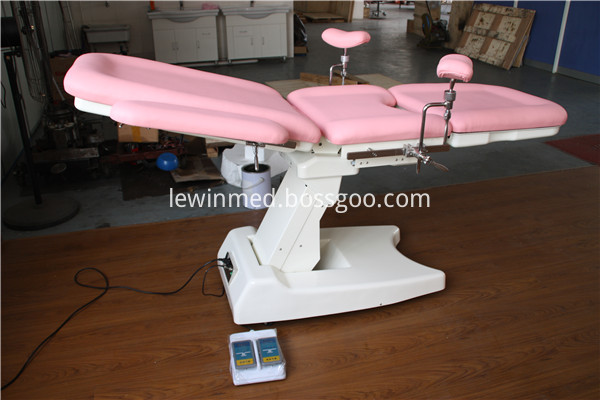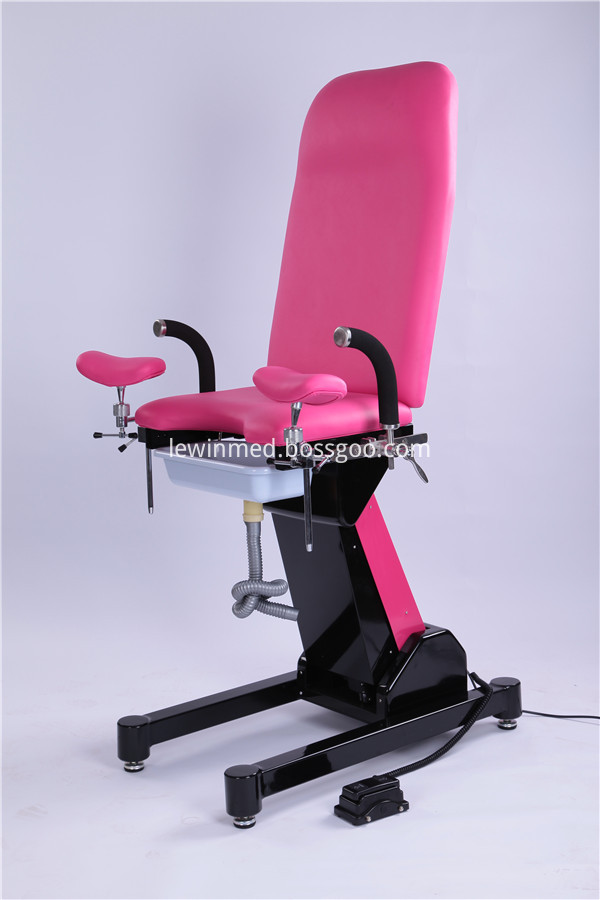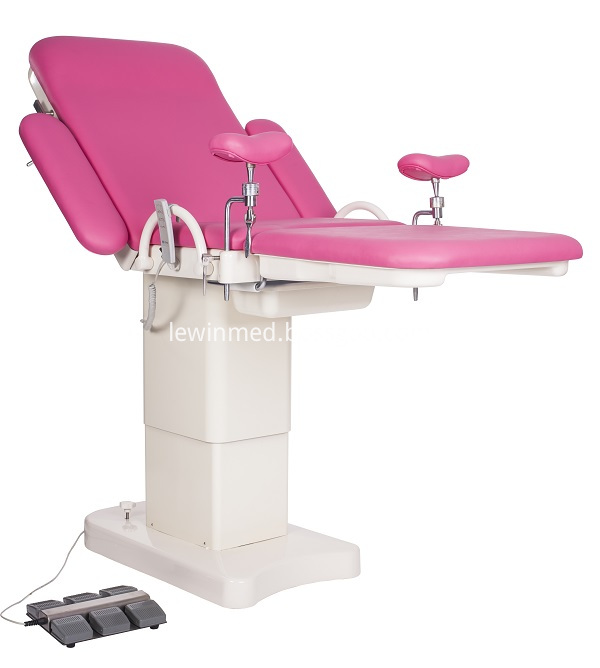California Pond High Yield Culture Technology
Multifunctional Obstetric Examination Bed
is for the modern hospital elaborates designed with childbirth, gynecologic
operation, diagnosis and examination, including emergency caesarean section in
a variety of medical functional bed. Obstetric Table table selection of high quality polyurethane foam, leather
bags, easy cleaning and disinfection. We have R&D center in Shandong, Shanghai, Shenzhen to launch new products to meet the needs for hospital every year. We have more than 50,000 square meters workshop and R&D building, which is characterized by high quality products and advanced technology.
Obstetric Table Obstetric Table,Gynecologic Table,Woman Delivery Table,Gynecological Table Shandong Lewin Medical Equipment Co., Ltd. , https://www.lewinmed.com
First, seed cultivation
1. Cement pond cultivation. Water depth is about 1m, 150 seedlings with a body length of 1 cm or less, 2-3 cm seedlings with 80 tails, and 3 cm seedlings with 30 tails per square meter are excellent in water quality, micro-flowing water, and good management work, stocking The density can be increased appropriately.
After the hatching of the yolk on the third day after hatching, the fry begins to ingest food, and it is necessary to feed young rotifers and other biological feeds, feeding 5-8 times a day, and each feeding amount is adjusted depending on the amount of remaining baits in the pool. After 6-8 days, when the length of fish fry is more than 1cm, small scales and small plankfishes, copepods, and other plankton may be fed. The amount of fish fed depends on whether or not the fry are fully fed. When the fry grows to 1.5cm, it can be fed with large scales. When it is more than 2cm in length, silkworms can be fed and the bait can be started so that the fry can concentrate on the bait station or the food market. Gradually change the food from live bait to chopped wild fish and other dead baits. When it is more than 5cm in length, it can be used as a product fish in a separate pond as a food fish.
2, pond cultivation. The water depth is 1~1.3m, and the fry are 7-10d before the lower pond. According to the conventional method, after the disinfection of clear ponds, the decomposing livestock and poultry manure is used to fertilize the water quality and reproduce the plankton so that the transparency of the pool water is kept at about 25cm, and the mu stocking density is 30,000 to 50,000.
As the Californian cockroaches kill each other more severely and grow unevenly, the broodstock will ingest fry. Therefore, regardless of the method of cultivation, it must be cultivated in a pool, and when it is checked diligently, if the size of the fry is not uniform, it must be timely. Sieve, separate and raise the fry.
Second, scientific breeding
1. Pond conditions. The California-based ponds require plenty of water, no pollution sources, good water quality, drainage, irrigation, and convenient management. The bottom sludge thickness is about 20cm, the area is 1 to 5 acres, the water depth is 1.5-2m, and the oxygen-added machinery is installed. The inlets and outlets must be provided with a dense mesh to facilitate filtration and escape. Frequent microfluidic water conditions are preferable. Prior to stocking, ponds should be sterilized in a clear manner according to conventional methods to kill predators and pathogens.
2, stocking density. The fish species to be released should be robust, non-injury and disease-free. The specifications should be large and uniform. Stocking time is generally suitable from May to June. The fish species with a body length of 6 cm or more can be put into 1200-1500 tails per acre, and the fish species with a body length of more than 10 cm can be placed in 800-1000 tails. In addition, appropriate amounts of salmon, squid, and white bream that are larger than California's oysters can be fed in an appropriate amount to ingest bait and regulate water quality, eco-culture, and increase yield and efficiency. However, it is not possible to breed ferocious fish such as razor clams and squid so as not to affect the survival rate in California. When the fingerlings are under the pond, they must use formalin 80g or 3% saline solution for 5 to 10 minutes per cubic meter of water to kill parasites and germs.
3, daily management. The key to breeding California commercial fish in ponds is to satisfy the feed supply. Small fish and shrimp can be fed in rivers, lakes, and reservoirs, as well as low-value chilled fish or artificial pellet feeds. In general, large-scale fish species need to be eaten for 2 days after they are stocked, because the Californian fish that is stocked will not adapt to the new environment for a while and will not eat immediately. The fourth day began to tame food, before eating food, put a small amount of broken pieces of water and evenly sprinkle it with water several times to make the water in the pond dynamic, and then feed the food. Due to starvation of fish, it is easy to snatch food and can be domesticated 5 to 7 days after patience. Feeding small fish or chilled fish is palatable. The juvenile stage needs to be cut into 0.5cm wide pieces of fish. After that, the amount of bait is gradually increased as the fish grows. Protein content is required for feeding with pellet feed. From 45% to 50%, the ratio of animal protein to vegetable protein is 1:1.5-2. After a few days of taming, each day 2 to 3 hours later, live baits of small-sized other fry, fish or leeches are fed on the bait station set in the pond to attract the California cormorants to concentrate on feeding, and then the lumps or granules are gradually broken. The feeds were mixed and fed 4 times a day, and then gradually reduced to 1 in the afternoon, allowing California to gradually develop the habit of eating small lumps of fish, chilled fish or pellets. The feeding amount of fish is 8% -10% of the total body weight of pond fish, and pellet feed is 5% - 6%. Feed feeding should be done regularly, quantitatively, positionally, and qualitatively, and should be flexibly adjusted and adjusted depending on the weather, water temperature, and fish ingestion. Where conditions permit, it is also possible to supplement the feeding of small live fish, shrimp or summer fry at intervals, and its body size should be less than 50% of that of California. Feeding methods should be taken by throwing vote, in order to increase the feed's time in the water and the chance of California eel hunting.
The water quality of the Californian quail is not fat, and the water transparency is kept at about 40cm. During the cultivation period, fresh water quality and high dissolved oxygen should be maintained. Regular injection, fresh water replacement, and oxygen start-up should be performed. At the same time, change the water every 10 to 15 days, each time the amount of water changed is about 30%. Persistently inspect the patrol ponds, find problems, and take timely measures to treat them symptomatically. Remove food bait and dirt in time.
Third, fish disease prevention
California crickets are more resistant to disease and are generally less ill when cultured. But sometimes due to improper management measures, there are fish diseases. Common fish diseases and prevention methods are as follows:
1, needleworm. It is caused by parasitic worms. Parasitic parts are mainly dorsal fin or pelvic fin base caudal fins, the affected part is often accompanied by congestion, and the appetite of the diseased fish is slightly poor. The treatment is to pick up the sick fish, remove the needleworm, and disinfect the wound with medication. Accelerating water changes can prevent the spread of the disease.
2. Blindness. Diseased fish eyes become white and cloudy, resulting in loss of vision and unable to eat, and finally die of hunger. The cause of the disease is to catch the fish's eyes during fishing or fishing, so care should be taken when handling it, especially to prevent eye damage.
3, bacterial disease. The symptom is that the diseased fish is darker than the normal fish, swimming slowly, often floating on the upper surface and losing appetite. The white tissue around the mouth formed ulceration, and the body surface was locally eroded into irregular, ring-shaped lesions that appeared white and some of the rays rotted. The disease progressed further, and the cocoon was pale red or pale white, and its ends were ulcerated and incomplete.
Bacterial fish disease has a rapid onset and is of great harm. It takes only 4-5 days between the beginning of the disease and a large number of deaths. Therefore, once the disease occurs, it will soon spread and spread, resulting in a large number of fish deaths. At the time of onset, the water temperature is generally 25°C to 28°C, and the epidemic season may be the same as grass carp gill disease.
The control method is to bleach the fish body with bleach solution or 3% saline solution for 10 to 15 minutes to kill pathogens. At the same time, with erythromycin mixed feed, on the first day of 1g per 100 kg of fish medication, the first 2-6d, with 0.5g per day, continuous 6d for a course of treatment. It is also possible to regularly use sulphonamides or antibiotics according to the instructions in the dose of mixed feed. It is also possible to use traditional hanging medicine bags and medicines to prevent diseases.
No matter what type of fish disease is being prevented, use dipterex insecticide. Because California gall is more sensitive to trichlorfon, the concentration of which is 0.15g per cubic meter of water can cause death. Therefore, do not use trichlorfon in the pond where California fish are bred. Pharmacy should be replaced with other drugs to kill insects and prevent diseases.


